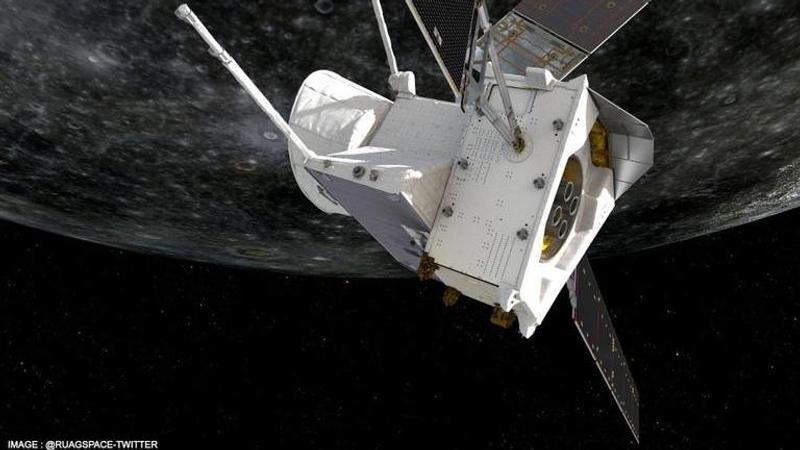Published 22:45 IST, September 29th 2021
Mercury-bound BepiColombo to flyby first planet on October 2; Details here
During its flight, it will capture imagery and science data that will provide a glimpse of the challenges that await the scientists on Mercury.

The BepiColombo spacecraft, jointly made by the European Space Agency (ESA) and the Japanese Aerospace Exploration Agency (JAXA), is ready to fly by the first planet of our solar system, Mercury. ESA informed that the spacecraft will race past the planet on October 2 at 5:04 am at an altitude of about 200 km. During its flight, it will capture imagery and science data providing glimpse of challenges that await the scientists on Mercury.
What inspired the BepiColombo spacecraft?
According to ESA, the spacecraft was given its name in remembrance of Giuseppe 'Bepi' Colombo, an Italian scientist and engineer who lived from 2 October 1920- 20 February 1984. Interestingly, the spacecraft’s next flyby is on the 101st birth anniversary of the scientist who first explained why Mercury rotates thrice in its orbit every two orbits around the sun. ESA revealed that it was Colombo’s calculations that helped NASA’s Mariner 10 spacecraft to achieve three flybys of Mercury instead of one. This feat was possible to achieve because of the gravity assist manoeuvre that Colombo suggested.
Mercury to host BepiColombo on six occasions
BepiColombo has been designed to make six flyby of Mercury and nine flybys in total including one at Earth, two at Venus. In fact, the spacecraft recently conducted a flyby of Venus on August 10. ESA revealed that the mission comprises of two mission orbiters which the Mercury Transfer Module will transfer in complementary orbits in 2025.
The orbiters, which include the ESA-led Mercury Planetary Orbiter and the JAXA-led Mercury Magnetospheric Orbiter, Mio, have been assigned with the job of understanding Mercury’s origin and evolution so close to the Sun. The orbiters will also study the planet’s core, surface, magnetic field as well as the exosphere.
Although the spacecraft will race past the planet at an altitude of just 198 kilometres, ESA said that taking high-resolution imagery with the main science camera will not be possible and said that the closest image will be captured from 1000 kilometres. As per ESA, this is due to the shielding of the camera by the transfer module as it remains in cruise configuration. However, the scientists will not be left empty-handed as BepiColombo’s three monitoring cameras (MCAMs) for four hours starting five minutes after the spacecraft reaches the closest distance.
(Image: Twitter/@RuagSpace)
Updated 22:45 IST, September 29th 2021



